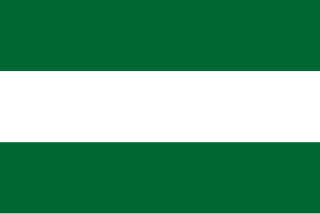
The Durrani Empire or the Afghan Empire, also known as the Sadozai Kingdom, was an Afghan empire that was founded by Ahmad Shah Durrani in 1747, that spanned parts of Central Asia, the Iranian plateau, and the Indian Subcontinent. At its peak, it ruled over the present-day Afghanistan, much of Pakistan, parts of northeastern and southeastern Iran, eastern Turkmenistan, and northwestern India. Next to the Ottoman Empire, the Durrani Empire is considered to be among the most significant Islamic Empires of the 18th century.

European influence in Afghanistan has been present in the country since the Victorian era, when the competing imperial powers of Britain and Russia contested for control over Afghanistan as part of the Great Game.

Emir Dost Mohammad Khan Barakzai, nicknamed the Amir-i Kabir, was the founder of the Barakzai dynasty and one of the prominent rulers of Afghanistan during the First Anglo-Afghan War. With the decline of the Durrani dynasty, he became the Emir of Afghanistan in 1826. He was the 11th son of Payendah Khan, chief of the Barakzai Pashtuns, who was killed in 1799 by King Zaman Shah Durrani.
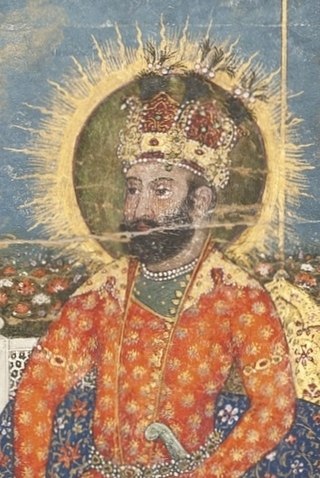
Zaman Shah Durrani, or Zaman Shah Abdali, was ruler of the Durrani Empire from 1793 until 1801. He was the grandson of Ahmad Shah Durrani and the fifth son of Timur Shah Durrani. An ethnic Pashtun of the Sadozai clan, Zaman Shah became the third King of the Durrani Empire.

The Battle of Kabul was part of a punitive campaign undertaken by the British against the Afghans following the disastrous retreat from Kabul. Two British and East India Company armies advanced on the Afghan capital from Kandahar and Jalalabad to avenge the complete annihilation of the British-Indian military-civilian column in January 1842. Having recovered prisoners captured during the retreat, the British demolished parts of Kabul before withdrawing to India. The action was the concluding engagement to the First Anglo-Afghan War.

The Battle of Jamrud was fought between the Emirate of Afghanistan under Emir Dost Mohammad Khan and the Sikh Empire under Maharaja Ranjit Singh on 30 April 1837. Afghan forces confronted the Sikh forces at Jamrud. The garrisoned army was able to hold off the Afghans till Sikh reinforcements arrived to relieve them.

Alakozai is a Pashtun tribe in Afghanistan. They are one of the four tribes of the Zirak tribal confederacy of Durrani Pashtuns.
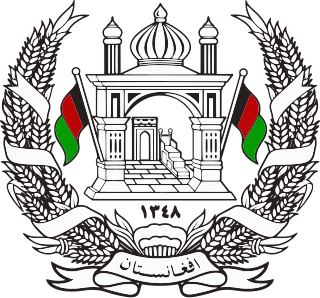
The Barakzai dynasty also known as the Muhammadzai dynasty ruled modern day Afghanistan from 1823 to 1978 when the monarchy ended de jure under Musahiban Mohammad Zahir Shah and de facto under his cousin Sardar Mohammad Daoud Khan. The Barakzai dynasty was established by Dost Mohammad Khan after the Durrani dynasty of Ahmad Shah Durrani was removed from power. As the Pahlavi era in Iran, the Muhammadzai era was known for its progressivist modernity in which Afghanistan was referred to as the "Switzerland of South Asia".

Timur Shah Durrani, also known as Timur Shah Abdali or Taimur Shah Abdali was the second ruler of the Afghan Durrani Empire, from November 1772 until his death in 1793. An ethnic Pashtun, he was the second eldest son of Ahmad Shah Durrani.
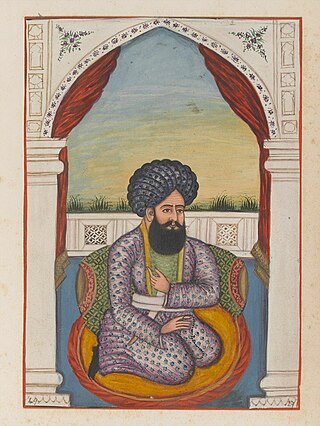
Sultan Mohammad Khan, also known as Ghazi Sardar Sultan Mohammad Talaei, and known by his epithet, Sultan Mohammad Khan the Golden was an Afghan chief minister and regent. He was a powerful brother of Emir Dost Mohammad Khan, the eventual ruler of Afghanistan who seized control of Kabul from him. Prior to and during the reign of Dost Mohammad Khan, Sultan Muhammad Khan Telai was chief minister and governor of various regions of Afghanistan, including Kabul, Peshawar and Kohat. He was the first of the Musahiban, a Mohammadzai dynasty that began with him and ruled Afghanistan for more than 150 years, in various forms such as emir, king or president from 1823 to 1978.
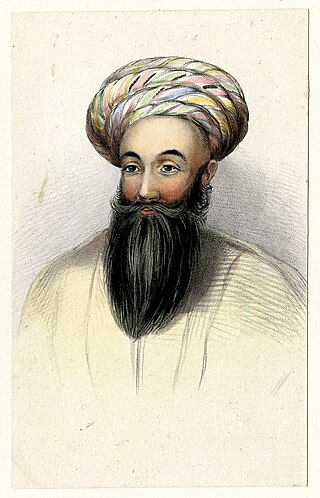
Padshah Sultan Shah Shuja Durrani was ruler of the Durrani Empire from 1803 to 1809. He then ruled from 1839 until his death in 1842. Son of Timur Shah Durrani, Shuja Shah was of the Sadduzai line of the Abdali group of ethnic Pashtuns. He became the fifth King of the Durrani Empire.

The Standoff at the Khyber Pass (1834–1835) was a short conflict from May 1834 to May 1835 by the Sikh forces led by Maharaja Ranjit Singh and the Afghan forces led by Dost Mohammad Khan. The conflict began as the Sikh Empire expanded into Peshawar, deposing the Peshawar Sardars, while also supporting the deposed Durrani dynasty in their attempts to return to the throne of Afghanistan under Shah Shuja Durrani.
The Expedition of Shuja ul-Mulk began in January 1833, whilst the siege of Kandahar began on 10 May 1834, and ended on 1 July 1834. The expedition was led by Shah Shuja Durrani, the deposed Afghan Emperor who wished to re-claim his throne. Shah Shuja rallied forces while in exile in the Sikh Empire and marched through Sindh to Kandahar, besieging it. Shah Shuja would be defeated by the Barakzai rulers of Kandahar and Kabul.
The Hazarajat Campaign of 1843 began as a result of the post First Anglo-Afghan War situation in Afghanistan. Behsud and Bamiyan had broken away from Afghan rule as a result of the war, and Dost Mohammad sought to reconquer it following his resumption of power in Kabul.
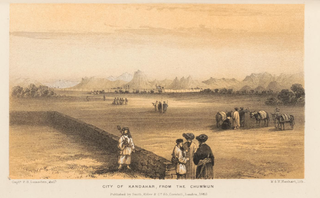
The Conquest of Kandahar took place on 14 November 1855, and its consolidation lasted as long as September 1856. Following the death of Kohandil Khan, the ruler of Kandahar under the Dil brothers, the region had fallen into a succession crisis between Rahmdil Khan, the brother of Kohandil, and Kohandil's sons, who wished to gain power for themselves. Dost Mohammad Khan, the ruler of the Emirate of Afghanistan, sought to take advantage of the anarchy and chaos, and conquer Kandahar for himself.
The Afghan Turkestan Campaign of 1838-39 began in the winter of 1838 and ended in March 1839. The campaign was sent as a result of the tyranny of the Qunduz Khanate's ruler, Murad Beg. It was also launched for reasons such as additional revenue gain and tribute from many of the Uzbek states present in the region, including an attempt at subjugating the prominent states of Khulm and Qataghan. Dost Mohammad also feared the rise of Murad beg and that the Qunduz Khanate was slowly enroaching on Bamiyan.
The Second Anglo-Afghan Treaty was signed in 1857, prior to the Indian Rebellion of 1857. This treaty saw significant gains for Dost Mohammad Khan. Following the signing of the treaty, Dost Mohammad Khan was pressured after the Sepoy Mutiny was began in India. This was emphasized internally from the Ulama, and Afghan chiefs, while externally, Bukhara threatened conflict with Dost Mohammad if he did not declare war on the British.
The Afghan Conquest of Balkh took place from the spring of 1849, to January 1850. Dost Mohammad Khan returned to the throne following the First Anglo-Afghan War, and continued pursuing his ambitions for the complete reunification of Afghanistan following its collapse from the civil war among Timur Shah's sons. Dost Mohammad began had entered the region once again in 1843 after being restored to the throne in the Hazarajat Campaign of 1843, extending his influence to Bamyan and many other regions. Dost Mohammad continued his ambitions into the region especially due to external threats such as Bukhara and the Emirate of Herat.
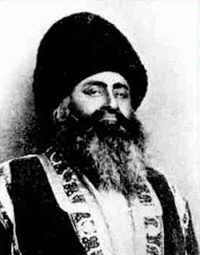
Shaghasi are alongside the Seraj and Telai a prominent and powerful cadet-branch of the Afghan Royal Family. They belong to the Zirak branch of the Durrani confederacy, and are primarily centered around Kandahar. They can also be found in other provinces throughout central Afghanistan.
Fateh Khan Barakzai or Wazir Fateh Khan or simply, Fateh Khan, was Wazir of the Durrani Empire during the reign of Mahmud Shah Durrani until his torture and execution at the hands of Kamran Shah Durrani, the son of the ruler of the Durrani Empire, and Mahmud Shah Durrani, and other prominent conspirators such as Ata Mohammad Khan. Fateh Khan was of the Barakzai tribe, and his death caused the enmity of his tribe, leading to his tribe revolting and the eventual deposition of Mahmud Shah Durrani.












